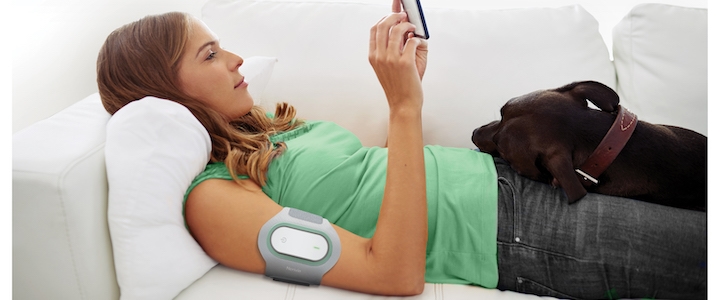
Andrew D. Hershey, MD, PhD, FAAN, FAHS
- Endowed Chair and Director, Division of Neurology
- Child Neurologist Headache Medicine Specialist, Division of Neurology
- Professor, UC Department of Pediatrics
- headache@cchmc.org
- 513-636-4222
- Board Certified
About
Biography
As a pediatric neurologist and headache medicine specialist, I combine my clinical interests with my research interests. My clinical interests lie in improving the outcomes for children, adolescents and young adults with headaches, most of which are migraine. My research seeks to understand the clinical and biological characteristics of headaches in order to improve the outcomes of not only the patients and families we see, but of patients everywhere.
My PhD focused on the molecular biology of the Substance P receptor, a neuromodulator of pain pathways. My residency training was in neurology with a special emphasis on child neurology. Combining these two interests naturally led to the study of migraine in children, adolescents and young adults. My career was guided by several mentors along the way, with two of the foremost being Dr. James Krause, my PhD mentor, and Dr. Arthur Prensky, a founder of child neurology who had an interest in headaches.
At Cincinnati Children’s Headache Center, we use a multidisciplinary team approach that incorporates neurology, psychology and nursing to improve the outcomes of these children, adolescents and young adults. A foundation of this approach is a consistent goal of educating the patients on how to manage their disease. Our responsibility is to answer all their questions through a combination of research and education.
We are the only pediatric center in the United States to be recognized as an Advanstar Clinical Center of Excellence in Headache Medicine by Medical Economics. I have received the Seymour Solomon Award from the American Headache Society. I am on multiple national and international committees that have established the treatment and research guidelines for headache medicine.
Cincinnati Children's Headache Center was one of the five founding institutions for the United Council for Neurologic Subspecialties (UCNS)-certified headache medicine training and the only one of the five dedicated to children and adolescents. Our program has been funded consistently by the National Institutes of Health (NIH) since 2003, with our largest grant being $18 million for the Childhood and Adolescent Migraine prevention (CHAMP) study, as reported in New England Journal of Medicine.
Cincinnati Children's Headache Center is an international leader in the treatment, education and research of headaches in children, adolescents and young adults. Our goal is not only to provide the best possible care to our patients but also to help children around the world through our research and education.
Migraine is a genetic condition, but multiple genes contribute to the disease. This results in variable symptoms and risk factors. In our research, we are seeking better disease characterization and learning from our patients, which will help us tease apart these factors. We hope to ultimately improve the lives of our patients and families.
When I’m not helping patients or engaged in research, I like to be out in nature with my family. We enjoy walking, kayaking, hiking and golfing.
BS: University of Iowa, Iowa City, IA, 1985.
MD: Washington University, St. Louis, MO, 1992.
PhD: Washington University, St. Louis, MO, 1992.
Residency: St. Louis Childrens Hospital, St. Louis, MO, 1993-1994; Barnes-Jewish Hospital, St. Louis, MO,1994-1995.
Fellowship: St. Louis Childrens Hospital, St. Louis, MO, 1995-1997.
Certification: Neurology with special competence in child neurology, 1998, recertified 2008; Headache Medicine, 2006.
Interests
Headaches; migraines; neurogenetics; neurometabolic disorders
Services and Specialties
Interests
Epidemiology; diagnostic criteria; treatment evaluation; outcome responses; quality of life issues; pharmaceutical trials; and neurogenetics of childhood headaches
Insurance Information
Cincinnati Children's strives to accept a wide variety of health plans. Please contact your health insurance carrier to verify coverage for your specific benefit plan.
Publications
CGRP - The Next Frontier for Migraine. The New England Journal of Medicine. 2017; 377:2190-2191.
Trial of Amitriptyline, Topiramate, and Placebo for Pediatric Migraine. The New England Journal of Medicine. 2017; 376:115-124.
Protocol for a randomized controlled trial evaluating a digital behavioral self-management intervention for adolescent migraine. Applied Nursing Research. 2025; 84:151979.
Patterns of Use and Benefit of Triptans in the Treatment of Acute Headache Worsening in Youth With Post-Traumatic Headache. Pediatric Neurology. 2025; 167:96-102.
Remote electrical neuromodulation to treat children and adolescents with migraine in the emergency department: A randomized double-dummy pilot trial. Headache. 2025; 65:1015-1026.
Effectiveness of Treatments used in New Daily Persistent Headache in Children & Adolescents (P5-12.001). Neurology. 2025; 104.
Efficacy and Safety of Fremanezumab for the Preventive Treatment of Episodic Migraine in Children and Adolescents: A Phase 3, Randomized, Double-Blind, Placebo-Controlled Study (PL5.001). Neurology. 2025; 104.
Youth with high-frequency headaches due to migraine are more vulnerable to non-cephalic pain complaints. Headache. 2025; 65:655-657.
Anxiety, depression, and headache-related disability in a large pediatric clinic-based sample. Headache. 2025; 65:420-429.
Single arm feasibility trial of a mobile application for adolescent migraine management. Pain Medicine. 2025; 26:170-172.
From the Blog
Arm Device May Improve In-School Migraine Control
Andrew D. Hershey, MD, PhD, FAAN, FAHS, Marielle K. Samaha, MD, FAAN, FAHS12/18/2024
Research Reinforces Alternatives to Medication in Migraine Care
Andrew D. Hershey, MD, PhD, FAAN, FAHS, Scott W. Powers, PhD, ABPP, FAHS7/27/2021
Research from Cincinnati Children’s Leads to New Migraine Treatment Guidelines
Andrew D. Hershey, MD, PhD, FAAN, FAHS8/22/2019
CHAMP Study Challenges Medication-Driven Approach to Migraine Care
Andrew D. Hershey, MD, PhD, FAAN, FAHS6/30/2019








Patient Ratings and Comments
All patient satisfaction ratings and comments are submitted by actual patients and verified by a leading independent experience management company, Qualtrics. Patient identities are withheld to ensure confidentiality and privacy. Only those providers whose satisfaction surveys are administered through Cincinnati Children’s Hospital Medical Center are displayed. Click here to learn more about our survey